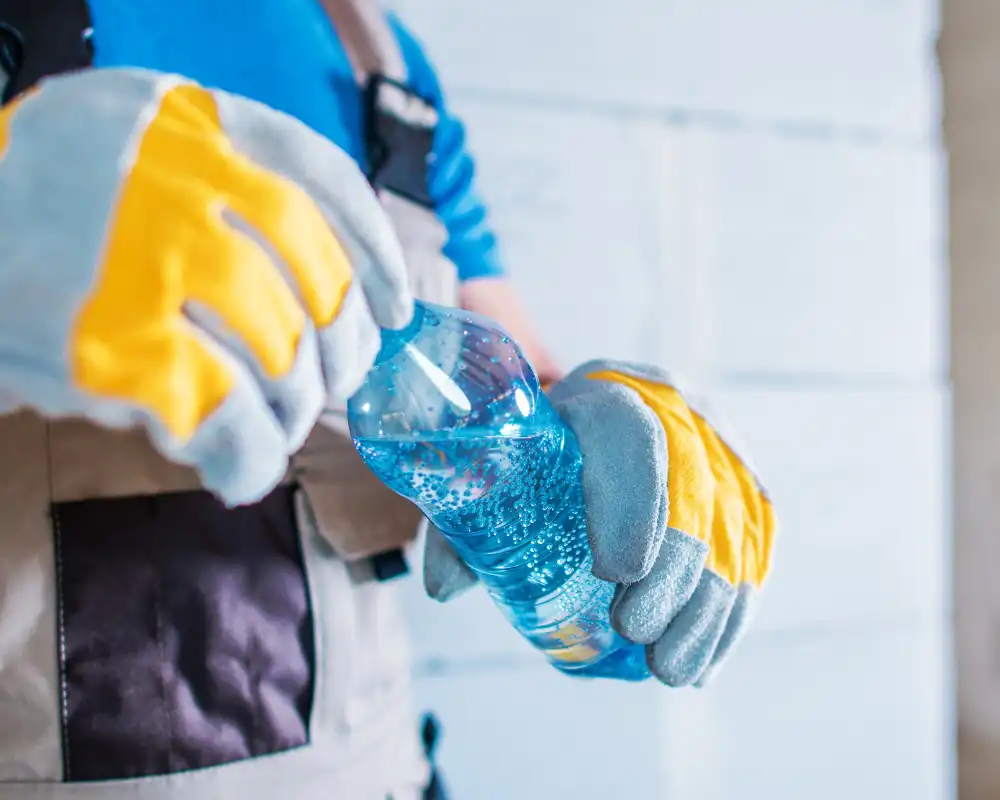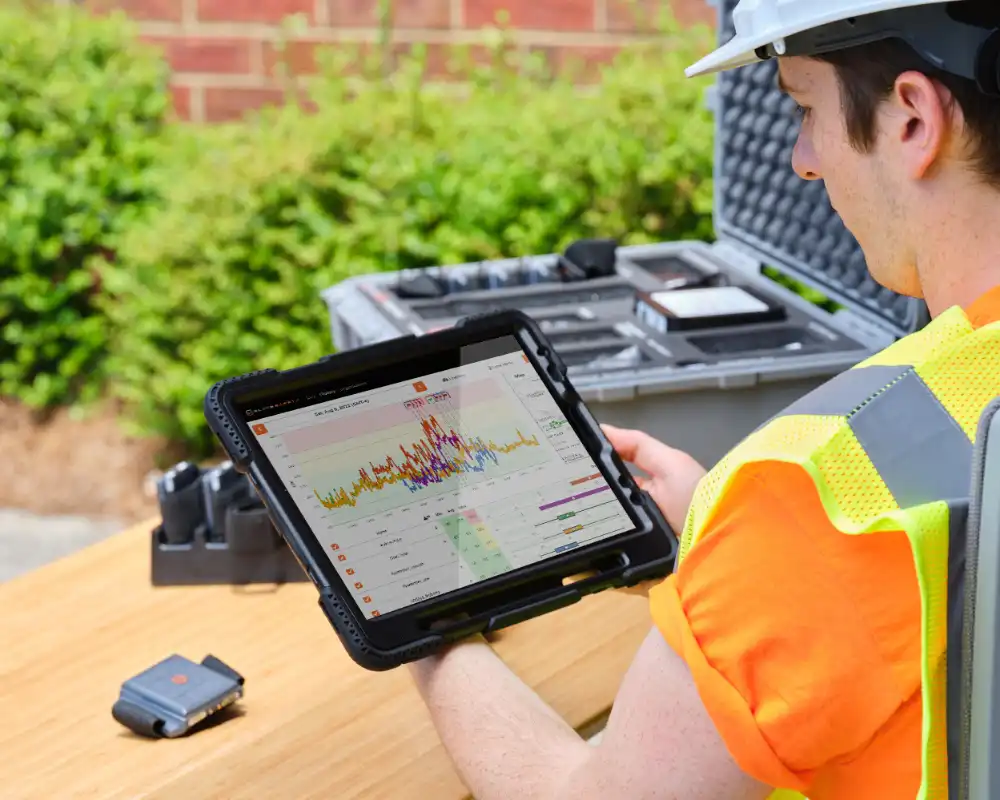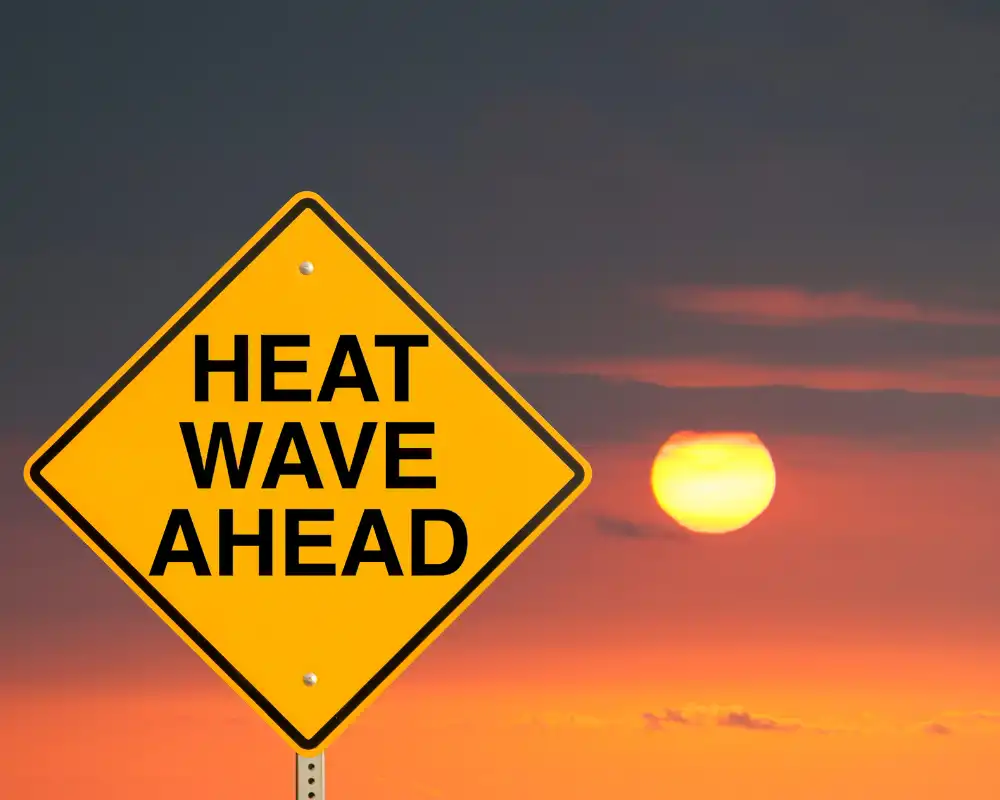Heat stress safety is crucial in ensuring a safe workplace, especially in physically demanding industries like oil and gas, utilities, and manufacturing. Despite its importance, many organizations still fall short in effectively managing this critical aspect of worker safety.
This article explores the top five mistakes organizations make in heat stress management and offers actionable insights on avoiding them. By understanding these common pitfalls, safety professionals and management can implement more effective heat stress safety measures.
#1: Ignoring Heat Stress Monitoring
Heat stress is a significant hazard in industries where environmental conditions often exacerbate the risk of heat. Workers in a steel mill, for instance, are exposed to both the high temperatures from the furnaces and the outdoor heat, which can combine to create extremely hazardous conditions.
Consequences of Ignoring Monitoring
The risks of overlooking heat stress monitoring are grave, particularly in sectors like agriculture or road construction, where workers are under direct sunlight for extended periods. Consequences include:
- Heat exhaustion, which can rapidly escalate to heat strokes if unnoticed.
- Chronic dehydration, which can affect kidney function over time.
- Decreased mental alertness leading to accidents and injuries.
For example, a construction worker operating heavy machinery without adequate heat stress monitoring may not notice mild heat exhaustion, which could impair their concentration and reaction times, increasing the risk of operational errors.
Solution: Implementing Effective Monitoring
Incorporating wearable heat stress monitors offers a proactive approach to managing heat risks. These devices are particularly effective in industries like mining and utilities, where:
- Real-time alerts can notify workers and supervisors of potential overheating before it becomes critical.
- Data collected can help adjust work-rest cycles adaptively, depending on the intensity of heat exposure and physical exertion levels.
- Long-term data analysis can identify patterns and improve the overall strategy for heat stress management.
Wearable devices not only measure the temperature but also consider humidity, wind speed, and solar radiation, providing a comprehensive overview of the heat stress risk in real-time. By implementing these personal heat stress monitors, organizations not only safeguard their employees’ health but also enhance their operational efficiency by reducing downtime caused by heat-related illnesses.
#2: Inadequate Training
Training on heat stress is vital for ensuring worker safety in industries like construction, oil and gas, and manufacturing. For instance, construction workers frequently exposed to high temperatures must know how to identify and respond to heat stress to prevent incidents.
Consequences of Poor Training
Without adequate training, workers face higher risks of heat-related incidents due to a lack of awareness about prevention and management. Consequences include:
- Misinterpreting early heat stress symptoms as minor discomfort.
- Delaying seeking help, which can worsen the condition.
- Ignoring preventive measures like regular hydration and breaks.
In agriculture, workers might overlook early signs of heat stress, leading to severe dehydration and heatstroke, which can result in hospitalization and lost productivity.
Solution: Enhancing Training Programs
Organizations can reduce risks by implementing comprehensive training programs regularly updated and reinforced with practical exercises. Effective strategies include:
- Developing industry-specific training modules.
- Conducting regular refresher courses to keep information current.
- Including simulated heat stress scenarios to reinforce learning.
For example, a manufacturing company might hold monthly drills to ensure employees understand heat stress protocols and can react swiftly in real situations.
#3: Lack of Access to Hydration
Hydration is crucial in regulating body temperature and preventing heat stress. On a construction site, for example, providing ample hydration stations helps workers stay hydrated, reducing the risk of heat stress.
Consequences of Inadequate Hydration Facilities
Insufficient hydration facilities can lead to dehydration and increase the risk of heat-related illnesses. Problems include:
- Dehydration symptoms like dry mouth, fatigue, and decreased urine output.
- Increased likelihood of heat exhaustion and heatstroke.
- Long-term health issues, such as kidney damage.
In mining operations, where workers face high temperatures, lack of access to water can quickly lead to severe heat stress, compromising safety and productivity.

Solution: Improve Hydration Access
Organizations should ensure drinking water is readily available to all workers, especially in hot environments. Effective strategies include:
- Installing water coolers or hydration stations throughout worksites.
- Providing portable hydration options for remote locations.
- Educating workers on the importance of regular water intake.
For example, logistics companies can equip drivers with portable coolers filled with water and electrolyte beverages to ensure they stay hydrated during long shifts.
#4: Improper Scheduling
Proper scheduling is essential to manage work in extreme temperatures. For instance, road maintenance crews might start at dawn and finish by midday to avoid peak heat.
Consequences of Intense Work Schedules
Intense work schedules without adequate breaks can increase heat stress risks. Consequences include:
- Faster onset of heat stress due to continuous physical exertion.
- Higher risk of accidents and mistakes due to fatigue and impaired judgment.
In agriculture, harvesting during midday heat without breaks can cause heat exhaustion, leading to accidents and reduced productivity.
Solution: Work-Rest Cycles
Adopting effective work-rest cycles helps prevent heat stress. Recommendations include:
- Incorporating frequent rest breaks in shaded or air-conditioned areas.
- Allowing time for hydration and cooling down between work periods.
- Adjusting schedules based on temperature, humidity, and physical demands.
For example, construction companies can implement policies requiring a 15-minute break every hour during extreme heat, ensuring worker safety and sustained productivity.
#5: Underestimating Acclimatization Needs
Acclimatization refers to the body’s gradually adapting to increased heat exposure. For instance, a new construction worker starting in the peak of summer needs time to acclimate to the high temperatures to work safely and efficiently.
Consequences of Rapid Exposure to High Heat Work Environments
Rapid exposure to high heat without proper acclimatization can result in severe health issues, including:
- Heat stroke, which can occur if the body is unable to cool down quickly enough.
- Increased risk of dehydration and heat exhaustion.
- Impaired judgment and reduced ability to perform tasks safely.
In the oil and gas industry, a worker exposed to intense heat without a gradual acclimatization period might suffer from heat stroke, leading to critical health emergencies and operational disruptions.
Solution: Implementing Acclimatization Protocols
To effectively reduce heat stress risks, organizations should implement acclimatization protocols that involve:
- Gradually increasing exposure to hot environments over 7-14 days.
- Monitoring workers for signs of heat stress and adjusting workloads accordingly.
- Providing additional breaks and hydration during the acclimatization period.
For example, a mining company can implement a phased approach where new employees start with shorter shifts and gradually increase their work hours as they adapt to the heat.
How SlateSafety’s Products Address These Issues
SlateSafety offers a range of solutions specifically designed to combat these challenges. For instance, the BAND V2 and BEACON V2 are instrumental in monitoring physiological and environmental factors, enhancing worker safety. These devices help:
- Track vital signs such as heart rate, body temperature, and hydration levels in real-time. This enables safety managers to receive instant alerts, allowing for immediate action to prevent heat-related incidents.
- Monitor environmental conditions like ambient temperature and humidity.
- Provide data-driven insights that support informed decision-making about work-rest cycles, hydration needs, and exposure limits.

Recognizing and addressing common mistakes in heat stress safety is vital for maintaining a safe working environment. By leveraging technologies like those provided by SlateSafety, organizations can not only address but anticipate the needs of their workforce, fostering a proactive safety culture.
The well-being of your workforce is paramount, and effective heat stress management is a critical component of occupational safety. Contact SlateSafety today and equip your team with the right tools and knowledge to combat heat stress effectively, including wearable heat stress monitors and WBGT devices.

